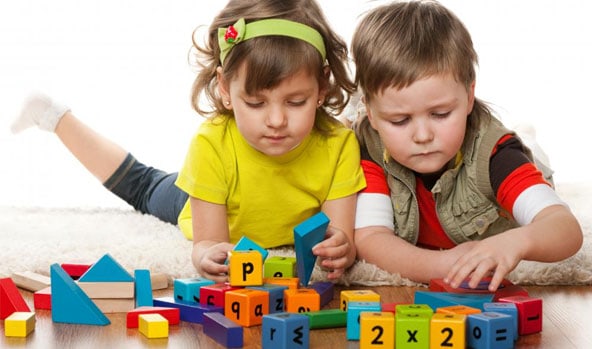Your preschooler knows a few things for sure. Cars and trucks make exciting noises and drive quickly. The animals at the farm love to be handfed. Summer means ice cream and hot, hot weather. Your child is learning a lot about the world, but may not be too interested in the arithmetic and geometry skills that she’ll need throughout her life, especially if she becomes interested in a STEM career. But you can begin to introduce these concepts at a young age, slowly.
- Because counting comes so naturally to adults, it can be difficult for us to remember that our children are not going to understand the meaning of the numbers 1 through 10 by simply reading them aloud in a counting book. Bring real life materials into your counting talk, and that will make learning much easier. Does your child love clementine slices. Count them out! Start by just counting one, two, and three slices. Repeat that counting for a few days. Then add a fourth, fifth, and sixth slice, eventually working your way up to ten. Giving your child something tactile, and delicious, to count will help him grasp the concept behind the numbers.
- Pointing out shapes may seem like a great way to introduce them to your child, but creating them can really help your little one to understand the difference between a blank slate and the shape you can create from it. Try tracing circles, squares, and triangles on paper, and cutting them out, or using cookie cutters with playdoh in order to make shapes you’d like to identify. Name each of the shapes you create with your child, and point out their characteristics, such as the curves of the circle or the angles of the square. Again, with some repetition of this activity, your child will begin to learn.
- Every time your child grows an inch or two, document it on a growth ruler on your wall, showing her that as the numbers get higher, that means that he is getting taller. Or, ask your child to help you measure ingredient for cooking. After a few occasions baking with your child, he’ll understand that two cups of flour is more than one cup.
Don’t expect these mathematical concepts to sink in immediately. They may not! It’s the repetition of the exposure to shapes, measurements, and counting that will help your child to begin to understand them over time.

